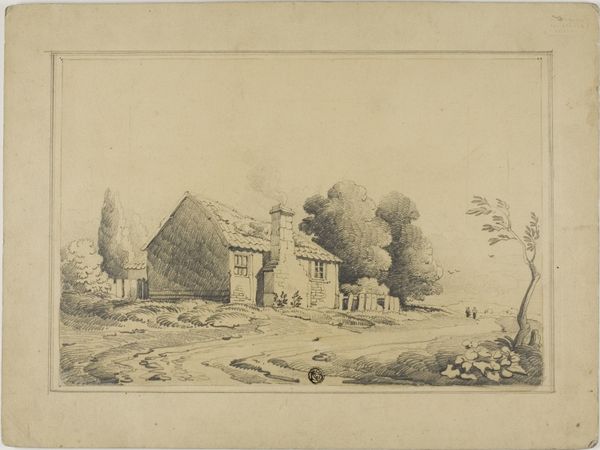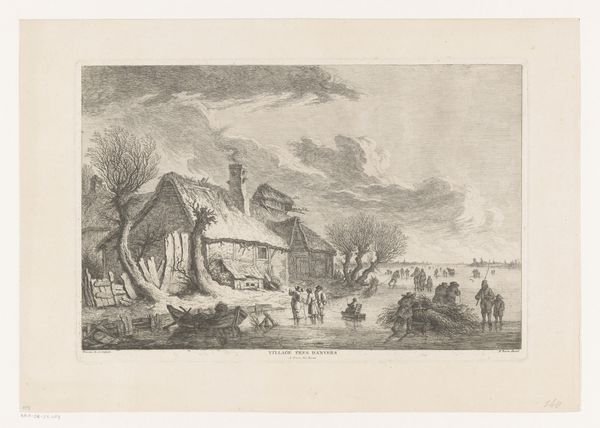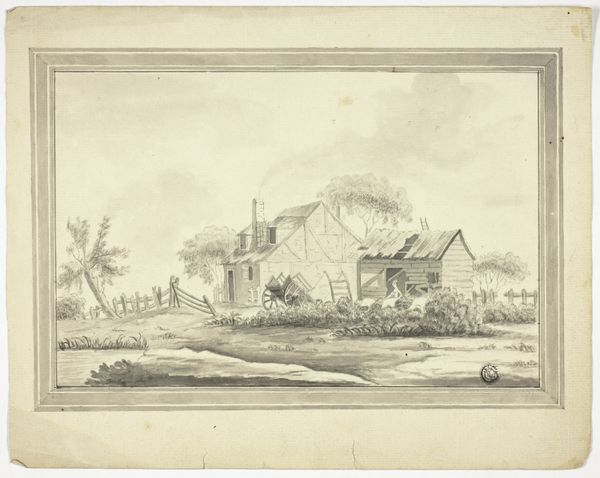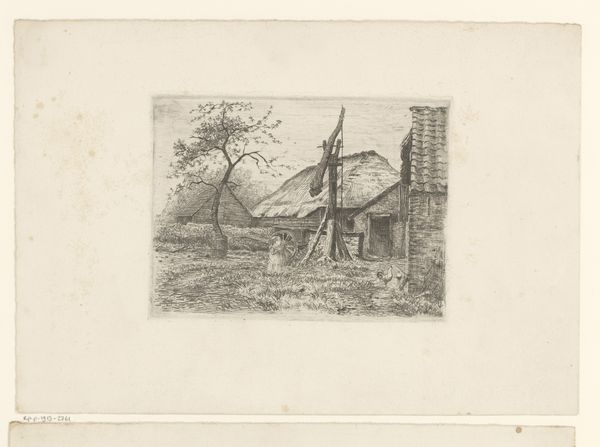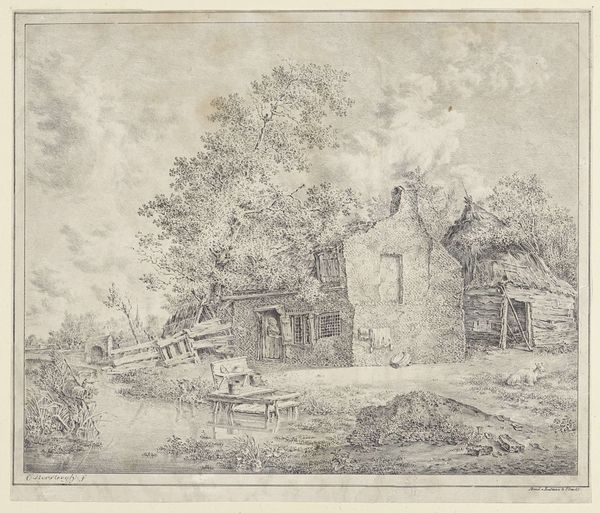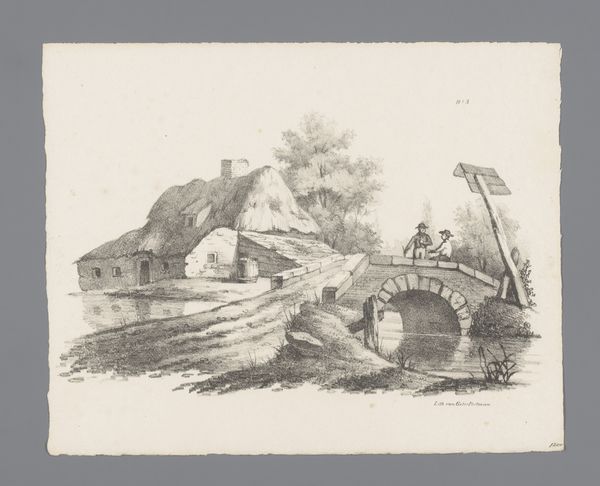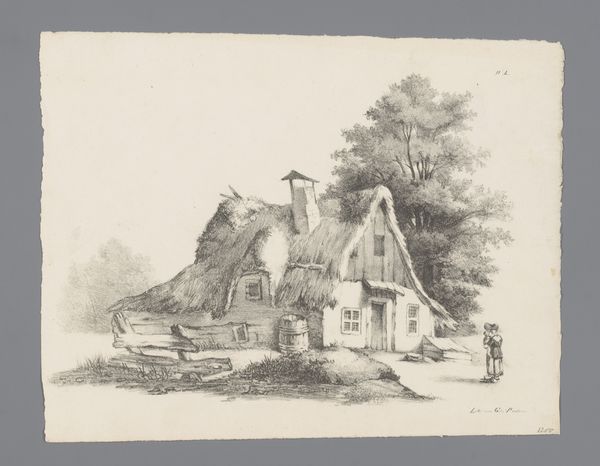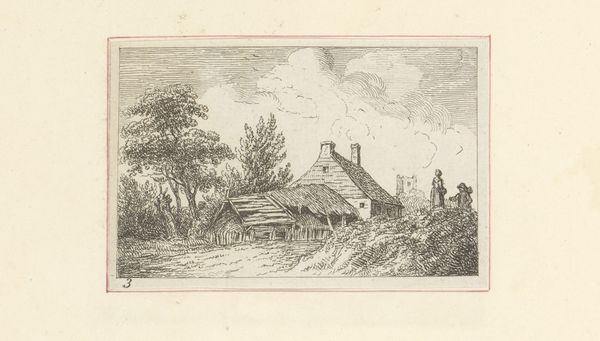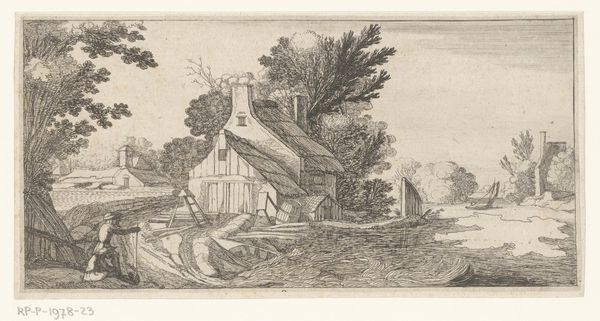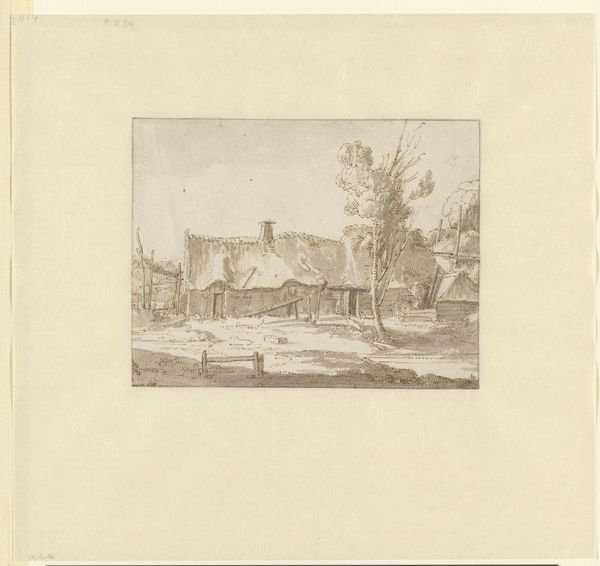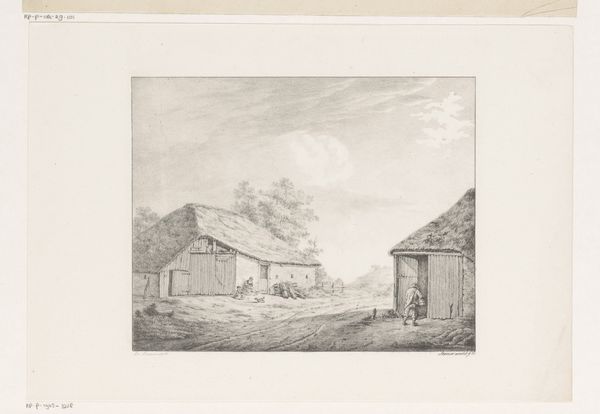
drawing, pencil, frottage
#
drawing
#
pencil sketch
#
old engraving style
#
landscape
#
etching
#
romanticism
#
pencil
#
cityscape
#
frottage
Dimensions: height 271 mm, width 413 mm
Copyright: Rijks Museum: Open Domain
Editor: This is "Landschap met ruïne van een kerk te Bergen" – "Landscape with Church Ruins in Bergen" – a pencil drawing by H. Scholten from 1824. I find it quite melancholic, like a memento mori. What symbols do you see at play here? Curator: Indeed, there is a tangible feeling of decline. Ruins, especially those of churches, often symbolize the passage of time, the transience of earthly power, and the fallibility of human endeavor. The stark pencil work emphasizes this, evoking a sense of loss, perhaps of faith, or of a previous, more structured social order. But notice the stork's nest atop the highest ruined tower: What do you make of that? Editor: Well, storks often symbolize birth and new beginnings, which feels almost ironic in this context. Curator: Precisely. The image becomes richer when we recognize that counterpoint. It's not just about decay; it also suggests resilience, the persistence of life even in the face of destruction. Consider the Romantic era; artists were often drawn to ruins not just for their mournful beauty, but for the reminder of history’s cycles and the possibility of rebirth. What feelings does this contrast elicit? Editor: It makes the scene more complex, less straightforwardly sad. There's a hint of hope, or at least continuation. Maybe the cycle of destruction is just another beginning. Curator: Precisely. The artist has layered symbols here: fragility and strength, decay and renewal. It invites us to contemplate our own relationship to time, memory, and the enduring spirit of life. Editor: I didn’t initially consider that, but framing it in terms of these symbols really does change my interpretation. Thanks! Curator: My pleasure. Visual language offers new meanings over time.
Comments
No comments
Be the first to comment and join the conversation on the ultimate creative platform.
